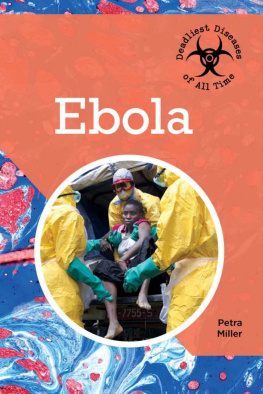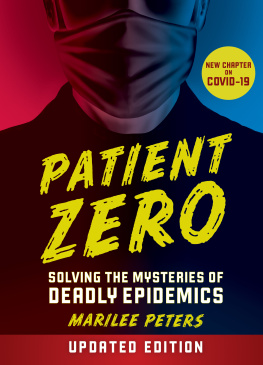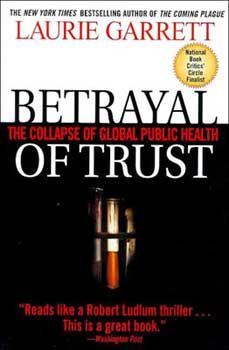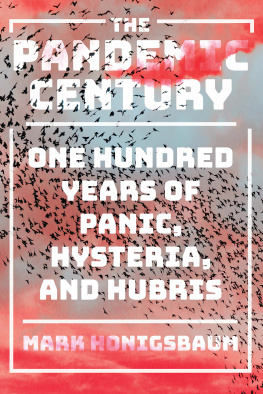Copyright Page
Dedication
To my children. This is why you have all your shots.
Copyright 2016 Simon and Schuster
All rights reserved.
This book, or parts thereof, may not be reproduced in any form without permission from the publisher; exceptions are made for brief excerpts used in published reviews.
Published by
Adams Media, an imprint of Simon & Schuster, Inc.
57 Littlefield Street, Avon, MA 02322. U.S.A.
www.adamsmedia.com
ISBN 10: 1-4405-9627-1
ISBN 13: 978-1-4405-9627-8
eISBN 10: 1-4405-9628-X
eISBN 13: 978-1-4405-9628-5
Printed in the United States of America.
10 9 8 7 6 5 4 3 2 1
Library of Congress Cataloging-in-Publication Data
Skwarecki, Beth, author.
Outbreak! / Beth Skwarecki.
Avon, Massachusetts: Adams Media, [2016]
LCCN 2016015141 (print) | LCCN 2016024010 (ebook) | ISBN 9781440596278 (pb) | ISBN 1440596271 (pb) | ISBN 9781440596285 (ebook) | ISBN 144059628X (ebook)
LCSH: Epidemics--History. | BISAC: MEDICAL / History. | HEALTH & FITNESS / Diseases / Contagious.
LCC RA649 .S59 2016 (print) | LCC RA649 (ebook) | DDC 614.4--dc23
LC record available at https://lccn.loc.gov/2016015141
This book is intended as general information only, and should not be used to diagnose or treat any health condition. In light of the complex, individual, and specific nature of health problems, this book is not intended to replace professional medical advice. The ideas, procedures, and suggestions in this book are intended to supplement, not replace, the advice of a trained medical professional. Consult your physician before adopting any of the suggestions in this book, as well as about any condition that may require diagnosis or medical attention. The author and publisher disclaim any liability arising directly or indirectly from the use of this book.
Cover design by Stephanie Hannus.
Cover and interior images Clipart.com, iStockphoto.com/Roberto A. Sanchez.
This book is available at quantity discounts for bulk purchases.
For information, please call 1-800-289-0963.
Introduction
Plague after plague has swept the earth, many changing the course of history. Armies have been decimated, emperors felled, boats full of warriors turned around on what would have been the eve of battle. We like to think its people that rule the earth, but germs wield much more power.
Today we are still not completely in control. We can slow pandemics, stop them, make them more rare, but never entirely prevent them. Nature keeps surprising us: Ebola killed more people in 2014 than in all of its previous outbreaks combined. Whole villages were wiped out, leaving nobody to run stores or restaurants or provide ordinary health care for nonlethal ailments. Bodies were collected en masse and buried or cremated with little ceremony and, sometimes, nobody left to grieve.
At least scientists understood the cause, and were able to set to work on the treatments and vaccines that could prevent the next outbreak. That wasnt the case when the Black Death struck Europe. With frightening fierceness, it produced a steady stream of bodies for mass graves, and doctors scrambled for cures. They tried bloodletting, prayer, potions of fermented spices. Instead of plasticky yellow bodysuits, plague doctors wore waxed leather cloaks and gloves, and breathed through masks stuffed with sweet-smelling herbs. Nobody had yet figured out how disease spreads, but avoiding the stench of death and squalor seemed like a good precaution to take.
Before this plague there were others: leprosy, malaria, tuberculosis. Smallpox lesions have been found on mummies. Skeletons thousands of years old show bone deformities that may be syphilis.
With thousands of years of practice in disease fighting, we are finally beginning to get it right. Bubonic plague still exists, but it can be killed by antibiotics. Smallpox, thanks to vaccines, is extinct in the wild. Cholera is a thing of the past in places where drinking water and sewage run in separate pipes. The first vaccine for dengue, the tropical breakbone fever, has finally made its debut.
This book follows these diseases through history, along with our often ill-fated attempts to understand and treat them. It tells the stories of historys most infamous outbreaks, from ancient scourges to modern-day medical mysteries. We will mourn for the dead, fear for the living, and applaud the helpers who risked their lives to care for the sick. With each century, it seems, we manage to steal a little more power from our foes the germs.
Chapter 1
World Takeover: Malaria, Africa, 10,000 B.C.E.
One of the oldest diseases known to humankind is still rampant today. Malaria started small, but with the help of mosquitoes, it took over the world.
- Death toll: Unknown; millions
- Caused by: Mosquito-borne Plasmodium parasites
- Noteworthy symptoms: Chills and a fever that recurs every few days
- Fatality rate: Unknown; today the fatality rate is less than 1 percent
- Threat level today: High in many parts of the world.
- Notable fact: About 7 percent of people alive today have at least one gene that helps them resist malaria.
Long, long ago, malaria hit the big time.
You would think this amoeba-like parasite was already doing pretty well, living inside peoples red blood cells and scarfing down their life-giving hemoglobin. But at first it was only doing this in a small neighborhoodprobably the east coast of Africa, around where Ethiopia is today.
But malaria spread. It covered all of Asia before long, including India and China. It expanded into the Mediterranean, and from there through Europe. The eastern coast of England was once known as a place eager to give visitors malarial fevers.
Its hard to pinpoint the date of this spread, especially because many of the people involved didnt know how to writeor if they did, and they wrote about malaria, their writings may not have survived. But once they figured out how to put ink on papyrus or silk, people around the world began writing about malaria: how to diagnose it and what to do once youve figured out somebody has it. The Chinese Huang-Ti Nei Ching (The Canon of Internal Medicine ), the Indian Atharva Veda, and the writings of Hippocrates in Greece all describe fevers that were probably malaria.
Whats Going On in There
Malaria isnt caused by a bacterium or a virus, but by a protozoan. Think of an amoeba, if that helps: a single-celled creature thats related more closely to us than to bacteria, but is still small enough to fit inside one of our cells.
The parasite enters a persons body with a mosquito bite, and rides the bloodstream to the liver to hide until it can make more of itselfamassing an army for its next step, which is a takeover of blood cells.
The liquid part of our blood is clear, and on its own would be unimpressive looking. But its filled with round red cells that keep us alive. With every heartbeat blood goes to the lungs, where the cells are suddenly surrounded in oxygen. That oxygen sticks to the hemoglobin inside the red blood cells, and with the next heartbeat the cells whoosh on their way.
Traveling to the cells destinationmaybe a muscle, or a vital organthe oxygen remains stuck to an iron atom in the center of the hemoglobin proteins. The malaria parasite has its figurative eye on that hemoglobin.











